Database
- Home
- Database
Basic knowledge of Database
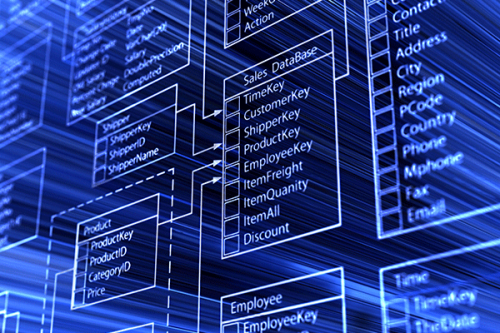

Databases allow computers to organize information in a way that is easy for humans to understand and work with, while maintaining the information in a way that is easy for computers to understand and work with. The term “database model” is used to describe how a database is organized and used, and determines how data can be stored, organized, and manipulated. We will discuss the major database models.
It is important to note that one type of database may be suitable for building a website or managing an online store, while another type may be suitable for more complex applications such as product recommendation functions. Knowing the main types of models will help you choose the most appropriate one.
With this in mind, let’s dig a little deeper and broaden our view of databases.
Defining a Database
A database is an organized set of structured information or data, usually stored electronically in a computer system. Databases are usually controlled by a database management system (DBMS). The data, the DBMS, and the applications associated with them are collectively referred to as a database system. In many cases, we simply refer to them as databases.
Major types of Databases
Relational database
A database that uses a relational model to relate a set of data, called a "tabular table," composed of rows and columns, to each other.
Network database
Relationships can be in the form of a net, where one element can point to multiple data elements, and can itself be pointed to by multiple data elements.
Hierarchical database
By being hierarchical in a tree structure, individual databases are associated with each other.


Distributed database
A form in which a single database management system controls multiple databases that exist on a network.
Object oriented database
Multiple types of data that are related to each other and data processing methods are defined as one and stored in the database as "objects".
NoSQL database
Ability to use a variety of languages and interfaces, not just SQL, to process large amounts of data at high speed.
Relational Database
It is a tabular database that consists of rows called records and columns called fields, and is called a table.
Relational databases are used in a variety of situations because they can be used in a similar way to Excel, allowing you to associate tabular data with each other and create new tables based on the relationships between the data.
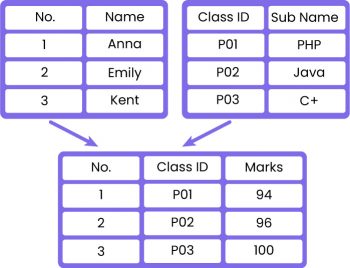

Network Database
The data is represented by nodes, which are derived from one node to another in a mesh-like structure, where each child node can have multiple parent nodes, and each parent node can have multiple child nodes.
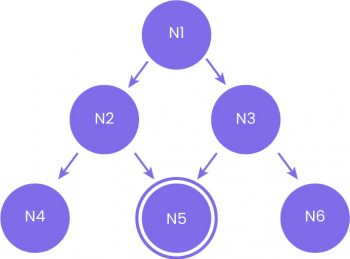

Hierarchical Database
Data is called a node, and a database stores data by deriving another node from one node and expanding it in a tree. In a hierarchical database, the data before derivation is called the parent node, and the data after derivation is called the child node. The parent node can have multiple nodes, and the child node has only one parent node.
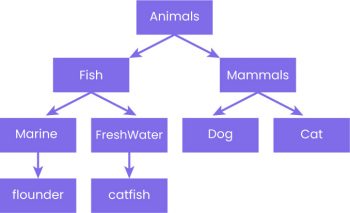

Distributed Database
A database in which a single database management system controls multiple databases that exist on a network.
A form in which a single database management system controls multiple databases that exist on a network. By distributing the databases and integrating the operations, there are advantages over accessing a centralized database, such as reduced communication load and improved performance, as well as the fact that overall functionality is not lost even if one database fails.
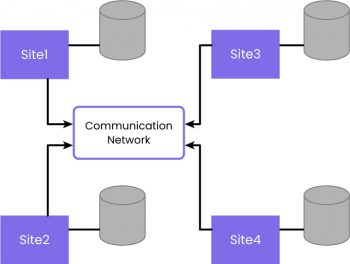

Object Oriented Database
Multiple types of data that are related to each other and the way the data is processed are defined together and stored in a database as an “object”. In a navigational manner, one object can be used to access other objects that are connected to it. Since no mapping or query language instructions are required, complex data structures can be processed at high speed.
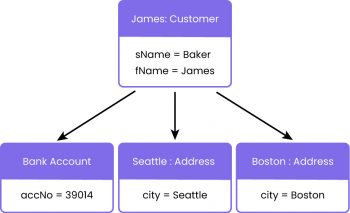

What is a DataBase Management system (DBMS)?
In many cases, a database requires a database management system (DBMS), a comprehensive software program that acts as an interface between the database and its end users or programs, allowing users to retrieve, update, and manage how information is organized and optimized. It allows users to retrieve, update, and manage the way information is organized and optimized. DBMS also facilitates monitoring and control of the database, enabling various management operations such as performance monitoring, tuning, backup and recovery, etc.
MySQL、Microsoft Access、Microsoft SQL Server、FileMaker Pro、Oracle Database、dBASE
What is SQL ?
SQL is a language used to manipulate databases (RDBMS). It can be used to insert and retrieve data from a database, as well as to perform any other operation. Tens of thousands or millions of data are stored in a database, and SQL makes it possible to manipulate them efficiently.
Since SQL is an international standard, it can be used in a variety of databases. Famous databases include Oracle, MySQL, PostgreSQL, and SQLite, all of which can be operated with SQL.
Setting the primary key for a table
Create and delete tables
Granting user rights
Search, add, update and delete data





